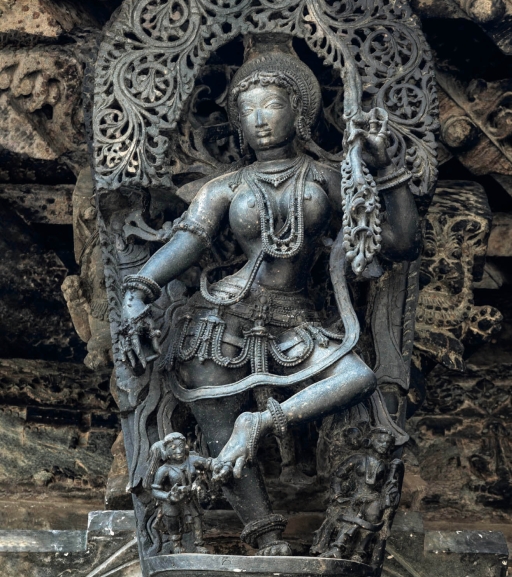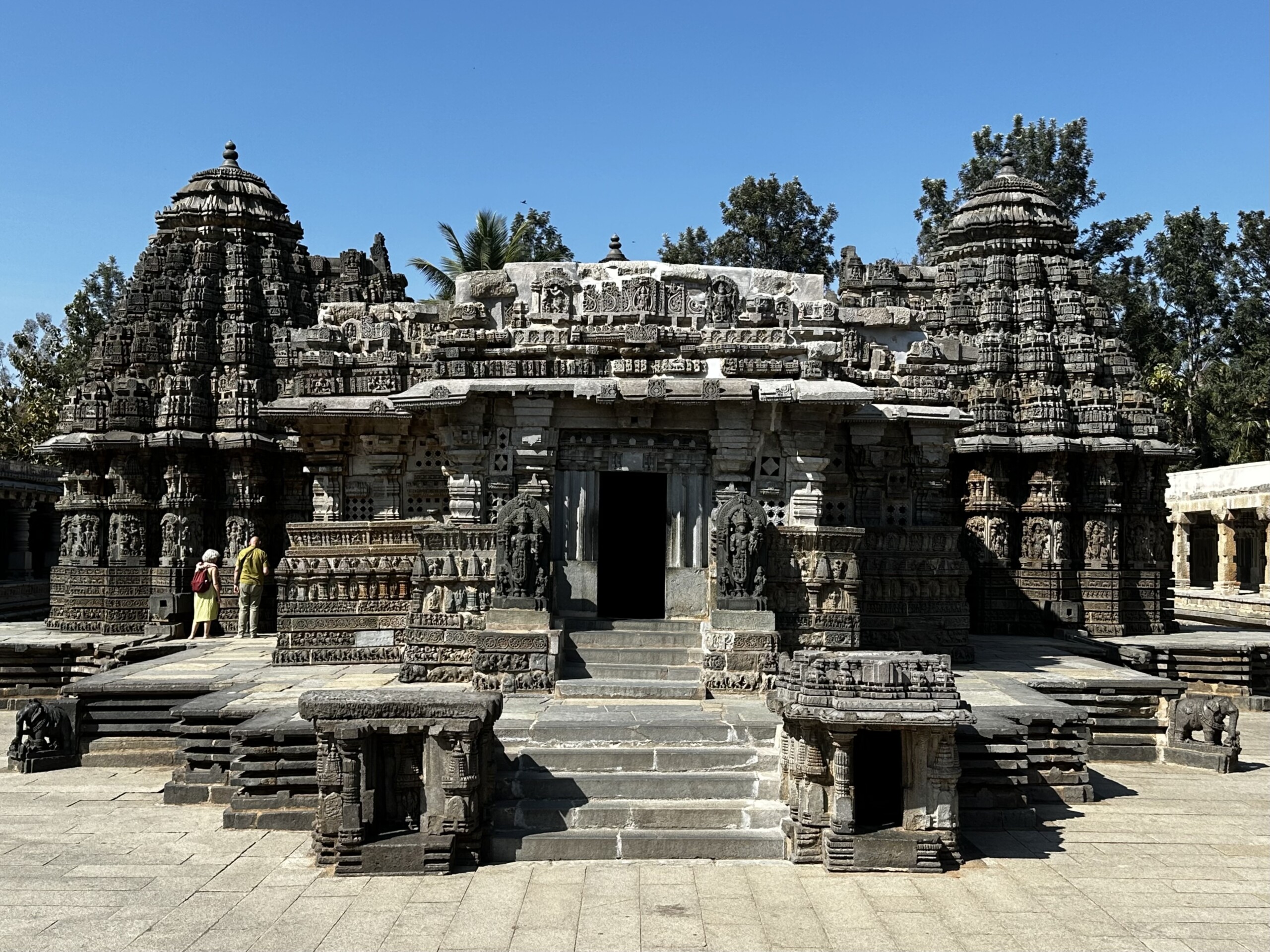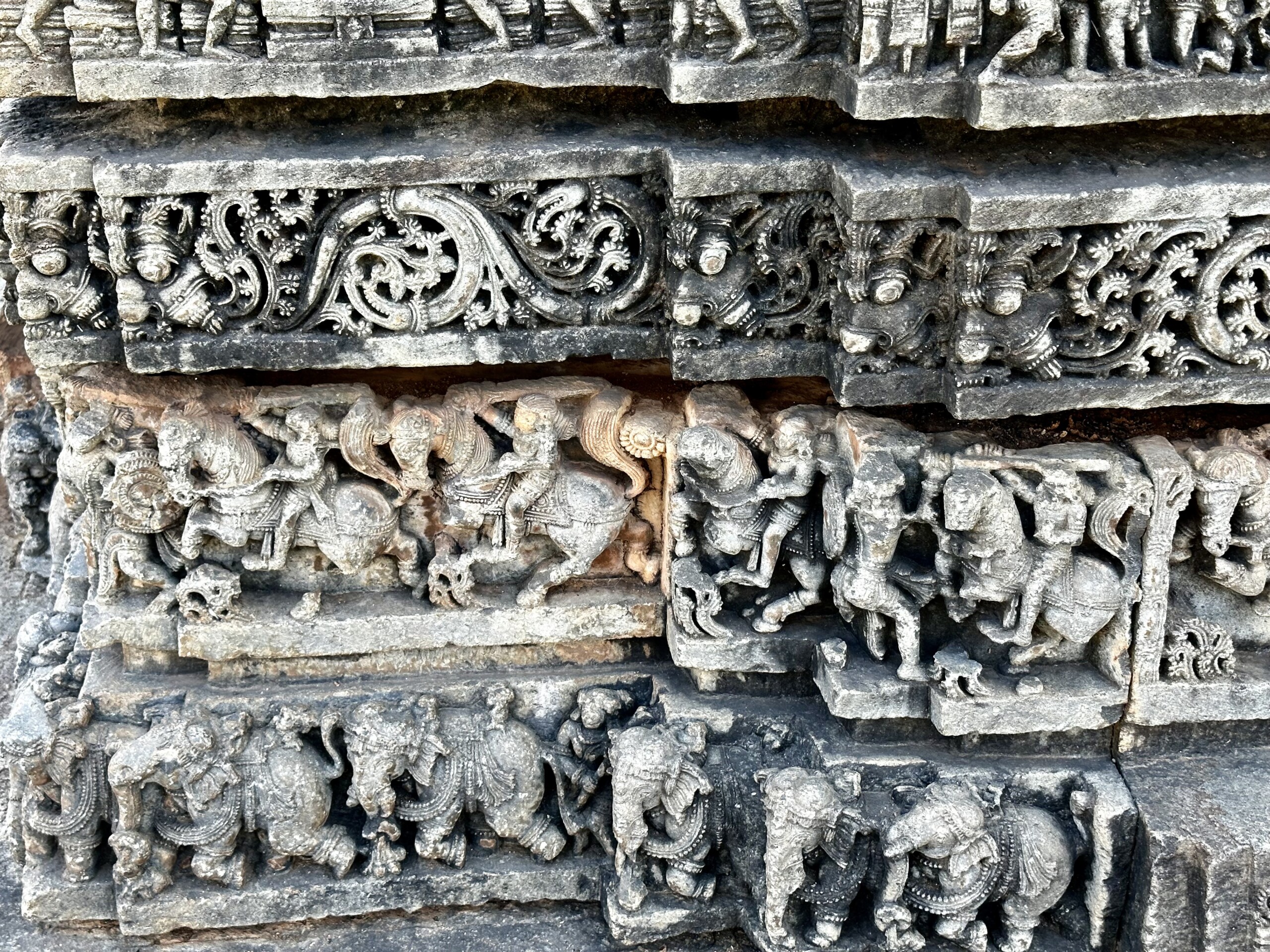An Age of Warfare in Hoysala Art
Anirudh Kanisetti
Hoysala temples, produced in a great burst from the 12th to the 13th centuries in the Southern Deccan, were the products of a sudden surge in the region’s geopolitical fortunes.
Up to this point, the Gangavadi region, roughly the region around Bengaluru, Mysuru and Kolar, had been an important regional player—but this seldom translated to success in the transregional politics of the medieval period. In the late 10th century, the region’s ruling Ganga dynasty collapsed. For nearly 150 years, Gangavadi was incorporated into the Chola empire, and saw a massive influx of Tamil-speaking peasant settlers as well as martial hill-peoples seeking opportunity in the chaos. The Hoysalas were among the latter.
In the late 12th century, exhausted by warfare, the Chola empire imploded. The Hoysalas quickly secured Gangavadi, and by the 13th century were successfully interfering in Chola politics and going to war with the lords of the northern Deccan. Under their reign the agricultural potential of the Belur region was realised, thanks in part to the construction of temples by a large chunk of the martial elite.
The militarism of the Hoysala is very evident in their temples. All Hoysala temples possess a high plinth, profusely decorated with friezes of cavalry and elephantry. Infantry also appear, though less regularly. Hoysala cavalry are usually depicted with equipment similar to that used in Persia and Central Asia at the time, indicating extensive trade links.
Hoysala sculpture is also unique because of its interest in depicting armour, especially on cavalry and elephantry. While other Indian militaries also used armour, it appears much more often in Hoysala art. Was this a mark of prestige for the Hoysalas? Did they specialise in heavy cavalry or elephantry? It’s difficult to say, but the cavalry-heavy Hoysala military was very successful, repeatedly mounting raids into the Kaveri valley and the northern Deccan. Like other 13th century South Indian kingdoms, cavalry allowed the Hoysalas to create a new, more centralised kind of state. Unfortunately, that also made them a target for another cavalry heavy Indian empire: the Delhi Sultanate.
For more on the Hoysalas’ spectacular temples, check out the Deccan Heritage Foundation’s guidebook, The Hoysala Legacy: Belur, Halebidu, Somanathapura.




